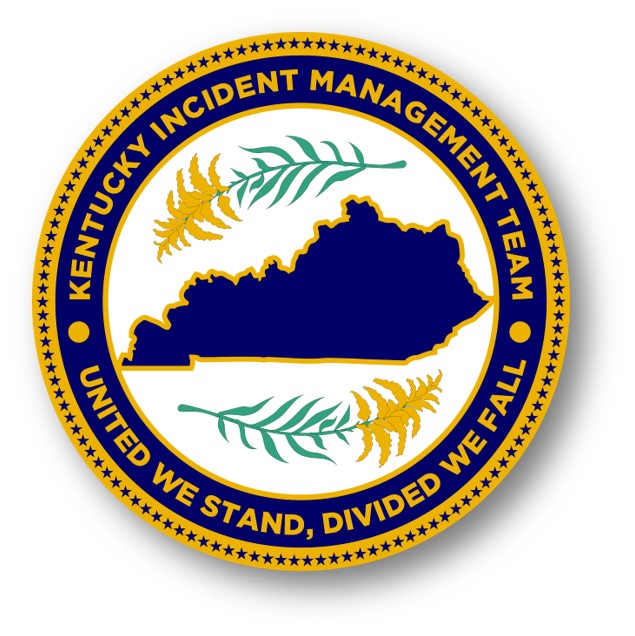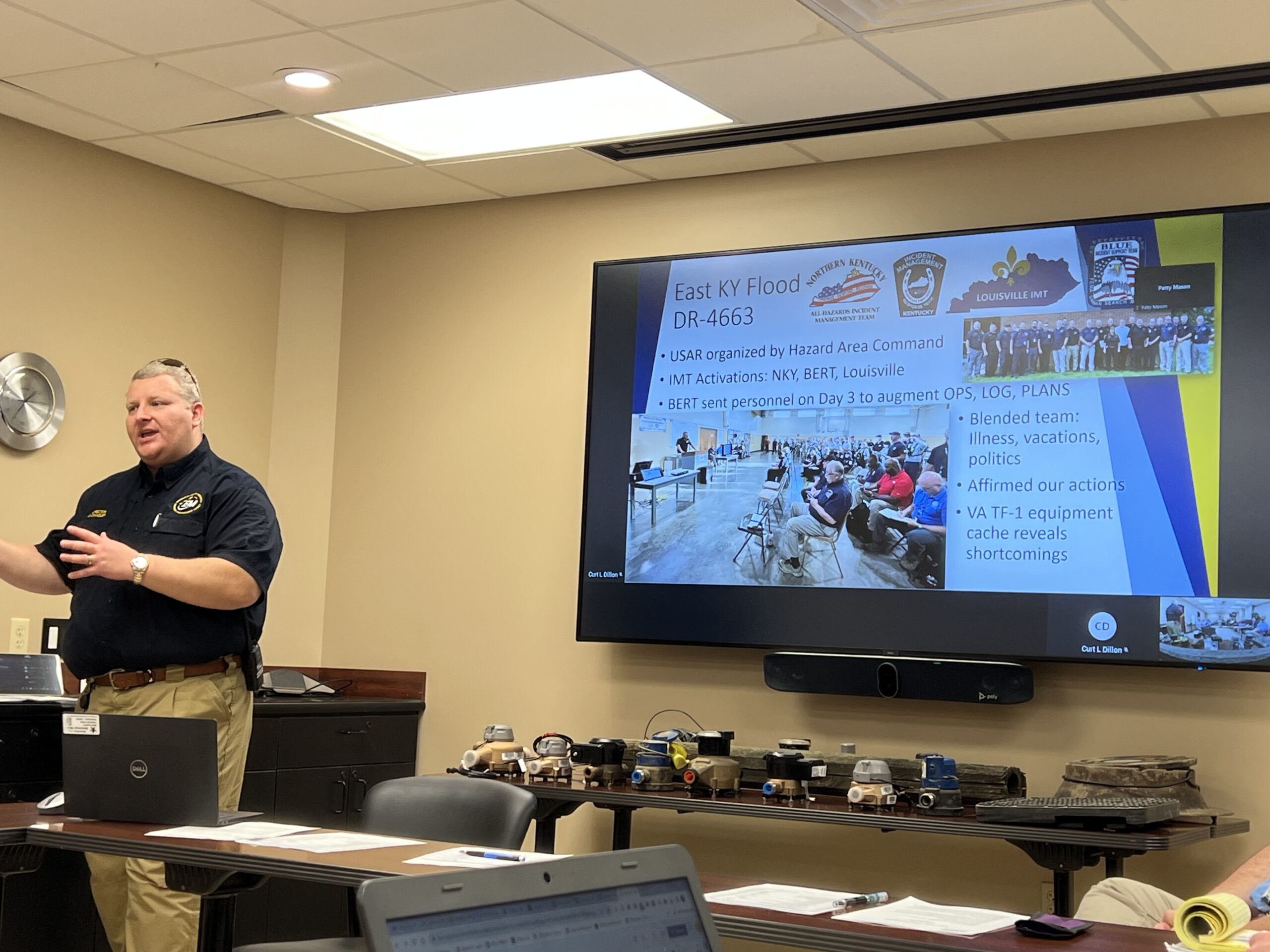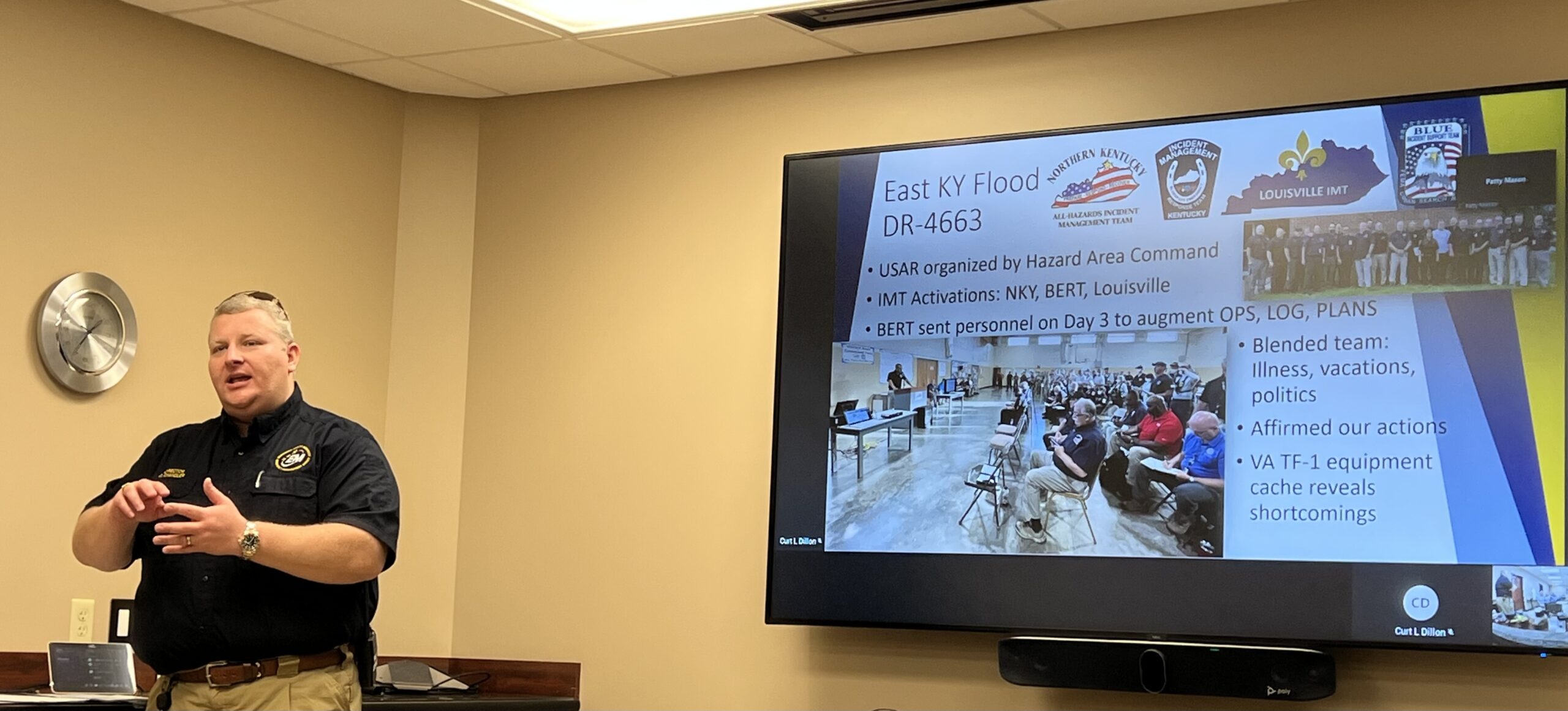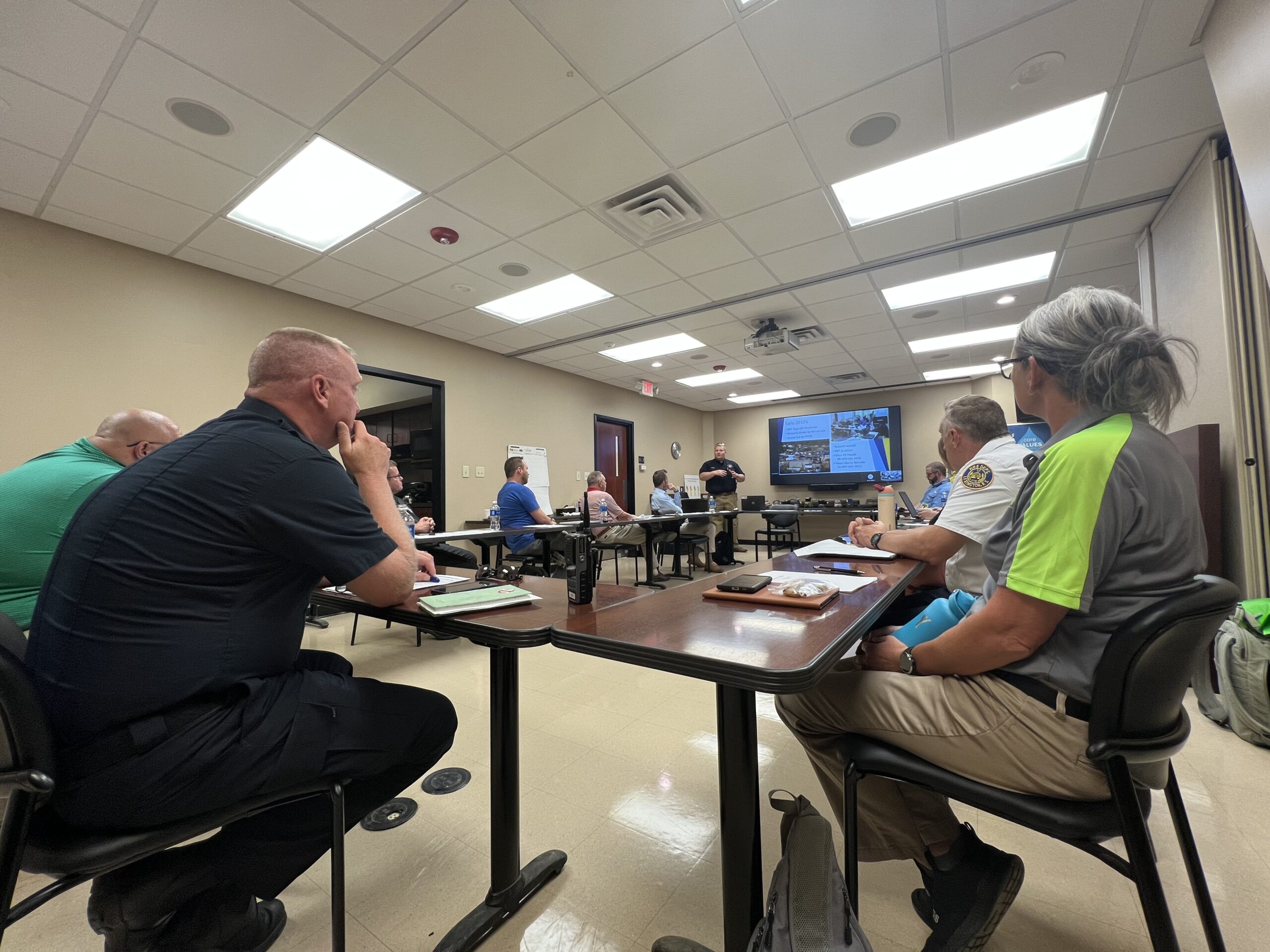Drew Chandler who is the Director of Woodford County Emergency Management attended the September Full Committee meeting to speak on the Kentucky Incident Management Team and the new Kentucky Qualification System. The Kentucky Qualification System (KQS) will be used to ensure that the dedicated professionals of the Kentucky Incident Management Team (IMT) are equipped with the skills and expertise needed to handle crises effectively. In recent times, the team has faced significant challenges in both Eastern and Western Kentucky, showcasing their commitment to safeguarding communities and ensuring a rapid, coordinated response.
Eastern Kentucky Deployment
In Eastern Kentucky, the IMT was called into action to tackle a series of natural disasters, including severe flooding and landslides. The team’s swift response played a pivotal role in managing the aftermath and providing critical support to affected residents.
The IMT’s deployment involved a multi-faceted approach. Firstly, they established command centers to efficiently coordinate resources and communication. This centralized coordination was crucial in ensuring that all responding agencies and personnel were on the same page, maximizing the effectiveness of the overall response.
Search and rescue operations were a top priority for the IMT in Eastern Kentucky. The team mobilized specialized personnel and equipment to locate and assist individuals stranded in hazardous areas. Their expertise in navigating challenging terrains and adverse weather conditions proved instrumental in saving lives and minimizing further harm.
Additionally, the IMT worked tirelessly to provide logistical support, including the distribution of essential supplies and the setup of temporary shelters for displaced residents. Their comprehensive approach addressed not only the immediate needs of the affected population but also laid the groundwork for long-term recovery efforts.
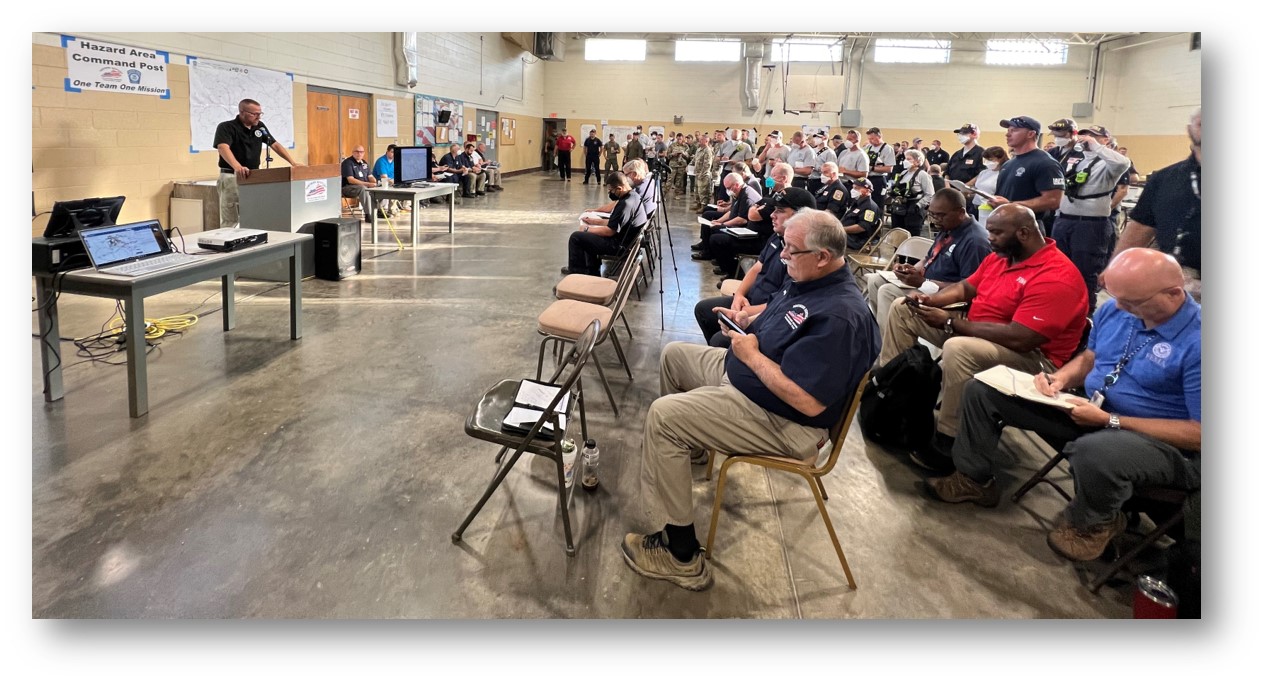
Western Kentucky Deployment
In a recent deployment to Western Kentucky, the IMT faced the daunting aftermath of a devastating tornado that struck Graves County. This article delves into the team’s response to the unique challenges posed by this natural disaster and highlights their unwavering commitment to community safety and recovery.
Once again, the IMT’s first and foremost priority was to conduct comprehensive search and rescue operations. With the tornado causing widespread damage and infrastructure collapse, specialized teams were deployed to locate and extricate individuals trapped in the debris.
The scale of destruction presented logistical challenges that required meticulous planning and coordination. The IMT worked in tandem with local, state, and federal agencies to streamline the flow of resources, including emergency personnel, equipment, and supplies. This collaborative approach was instrumental in overcoming roadblocks and ensuring a rapid response to the pressing needs of the Graves County community.
The recent deployments of the Kentucky Incident Management Team in Eastern and Western Kentucky exemplify their dedication to preserving life, property, and the environment. By demonstrating adaptability, coordination, and expertise, the IMT has proven to be an invaluable asset in times of crisis. As Kentucky continues to face diverse challenges, the IMT stands ready to respond, ensuring the safety and well-being of the communities they serve.
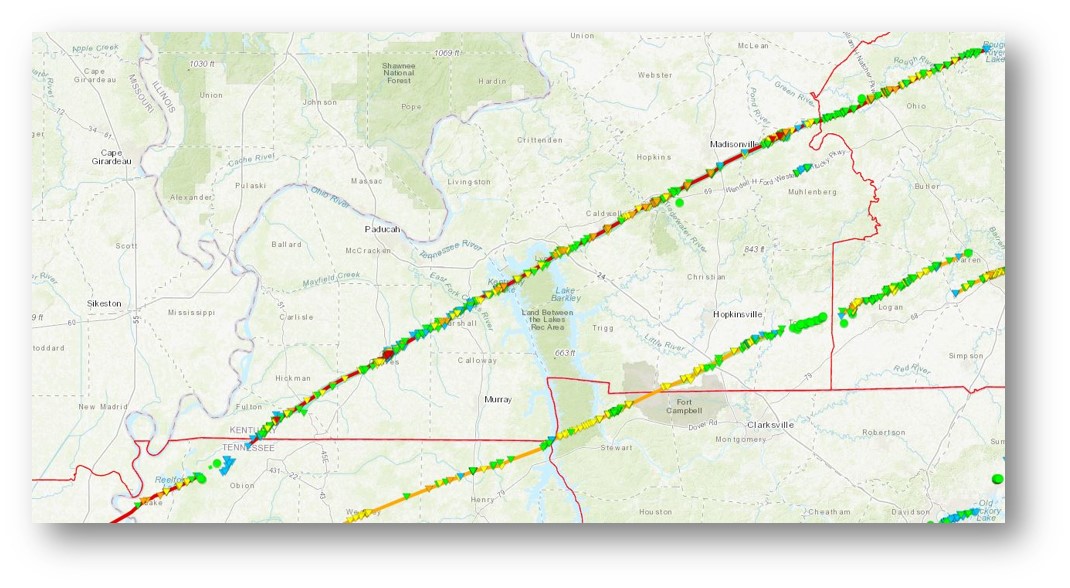
Kentucky Qualification System (KQS)
The KQS is a comprehensive framework designed to standardize and enhance the qualifications of emergency responders and incident management personnel across the state. It serves as a dynamic and evolving system, adapting to the ever-changing landscape of emergency management.
The KQS incorporates a rigorous credentialing process that evaluates individuals based on their knowledge, skills, and practical experience. IMT members have local prerequisites that have made them qualified to serve on the IMT however, the KQS offers a broader credentialing process that offers more assets for the State Emergency Operations Center (SEOC) to call on for inter-and-intrastate missions. Standardized training and credentialing processes create a unified team with a shared understanding of roles, responsibilities, and best practices to promote a cohesive and coordinated response.
In essence, the Kentucky Incident Management Team’s proficiency in the face of adversity serves as a testament to the importance of continued training and a robust credentialing system to make certain the teams responding to the disasters are some of the best that Kentucky has to offer.

